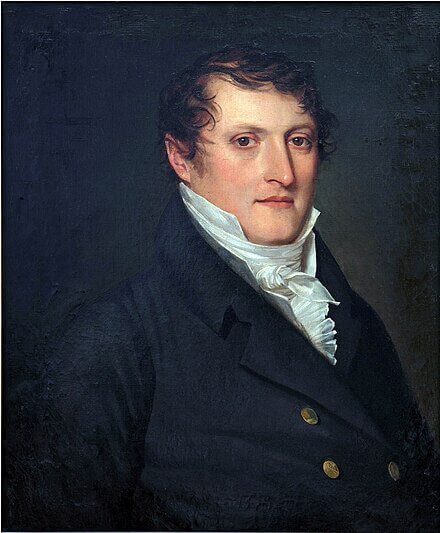The flag of Argentina is a striking and iconic emblem that embodies the nation's rich history, cultural heritage, and aspirations. It consists of three equal horizontal bands: light blue at the top and bottom, with white in the center.
At the heart of the white band sits the radiant Sun of May, a golden sun with a human face surrounded by 32 rays — 16 straight and 16 wavy, alternating. This design, both simple and profound, has come to represent Argentina's identity on the world stage and holds deep significance for its people.
Argentina information
| National Flag Day | June 20 |
| Sovereign state | Yes |
| Official name | Argentine Republic |
| Capital | Buenos Aires |
| Population | 45,605,826 |
| Area | 2,780,400 km² |
| Currency | Argentine peso (ARS) |
| Language | Spanish |
| Continent | South America |
| Region | South America |
| Subregion | Southern Cone |
| Borders | Chile, Bolivia, Paraguay, Brazil, Uruguay, South Atlantic Ocean |
| Timezone | Argentina Time (ART) UTC-3 |
| Calling code | +54 |
| Top-level domain | .ar |
History and Evolution of the Argentine Flag
 The Argentine flag was created by Manuel Belgrano, a prominent military
leader and politician during the Argentine War of Independence. It was first
raised on February 27, 1812, in the city of Rosario, on the banks of the
Paraná River. Belgrano designed the flag to distinguish Argentine forces from
their Spanish colonial adversaries and to serve as a rallying symbol for the
nascent nation's struggle for independence.
The Argentine flag was created by Manuel Belgrano, a prominent military
leader and politician during the Argentine War of Independence. It was first
raised on February 27, 1812, in the city of Rosario, on the banks of the
Paraná River. Belgrano designed the flag to distinguish Argentine forces from
their Spanish colonial adversaries and to serve as a rallying symbol for the
nascent nation's struggle for independence.
Initially, the flag consisted only of the light blue and white bands. The Sun of May was added to the design in 1818, drawing inspiration from the Inca sun god Inti and commemorating the May Revolution of 1810, which marked the beginning of Argentina's path to independence. The sun's inclusion was officially decreed by the Congress of Tucumán, solidifying its place as a central element of the national emblem.
Over the years, the flag underwent several minor modifications:
- In 1826, the exact shade of blue was standardized to "celeste" or sky blue.
- In 1943, the design of the Sun of May was officially formalized.
- In 2010, the specific colors were codified using the Pantone matching system to ensure consistency in reproduction.
Symbolism and Design of the Argentine Flag
Every element of the Argentine flag is imbued with deep symbolism:
- The light blue bands represent the sky, the waters of the Río de la Plata, and the blue used by the House of Bourbon, under whose rule the Vice-royalty of the Río de la Plata was created.
- The white band symbolizes silver (Argentina means "land of silver" in Latin), peace, and the snow of the Andes mountains.
- Together, the blue and white colors are associated with the Virgin Mary, the patron saint of Argentina.
- The Sun of May (Sol de Mayo) holds multiple layers of meaning:
- It commemorates the May Revolution of 1810, marking the first step towards independence.
- It represents Inti, the Inca sun god, acknowledging the indigenous heritage of the region.
- The sun's human face symbolizes consciousness and rationality.
- The 32 rays (16 straight and 16 wavy) are said to represent the provinces of Argentina, though this interpretation came after the design was created.
Usage and Significance of the Argentine Flag
 The flag of Argentina serves as a powerful symbol of national identity, unity,
and pride. It is prominently displayed on government buildings, schools, and
public institutions across the country. During national holidays, such as
Independence Day (July 9) and
Flag Day (June 20, commemorating the death of Manuel Belgrano), the
flag takes center stage in celebrations, parades, and official ceremonies.
The flag of Argentina serves as a powerful symbol of national identity, unity,
and pride. It is prominently displayed on government buildings, schools, and
public institutions across the country. During national holidays, such as
Independence Day (July 9) and
Flag Day (June 20, commemorating the death of Manuel Belgrano), the
flag takes center stage in celebrations, parades, and official ceremonies.
 In international contexts, the Argentine flag represents the nation at
diplomatic events, United Nations gatherings, and sporting competitions. It's
a source of immense pride for Argentine athletes competing in events like the
FIFA World Cup and the Olympic Games, where it symbolizes their national
identity on the global stage.
In international contexts, the Argentine flag represents the nation at
diplomatic events, United Nations gatherings, and sporting competitions. It's
a source of immense pride for Argentine athletes competing in events like the
FIFA World Cup and the Olympic Games, where it symbolizes their national
identity on the global stage.
The flag also plays a significant role in Argentine culture and daily life. It's often displayed at cultural events, music concerts, and even in private homes, reflecting the deep patriotic sentiment of the Argentine people. The colors of the flag are frequently used in art, fashion, and design, further embedding its symbolism in the national consciousness.
Interesting Facts About the Argentine Flag
- The Argentine flag is one of the oldest national flags in continuous use, having been in service for over 200 years.
- The specific shade of light blue used in the flag is called "celeste" in Spanish, which translates to "celestial" or "sky blue".
- There are two versions of the Argentine flag: the Official Ceremonial Flag (with the Sun of May) and the Ornamental Flag (without the sun), which is used for decoration and by civilians.
- The Sun of May on the Argentine flag is shared with the national flag of Uruguay, reflecting the two countries' shared history as part of the Viceroyalty of the Río de la Plata.
- In Argentine schools, students often take an oath of allegiance to the flag, known as the "Promesa de lealtad a la Bandera" (Promise of loyalty to the Flag), highlighting its importance in civic education.
- The world's largest Argentine flag is displayed annually in Rosario, the birthplace of the flag, measuring an impressive 20 meters by 46 meters.
- The flag's designer, Manuel Belgrano, is honored with a national holiday (June 20) that coincides with Flag Day, underscoring the deep connection between the flag and the nation's founding figures.